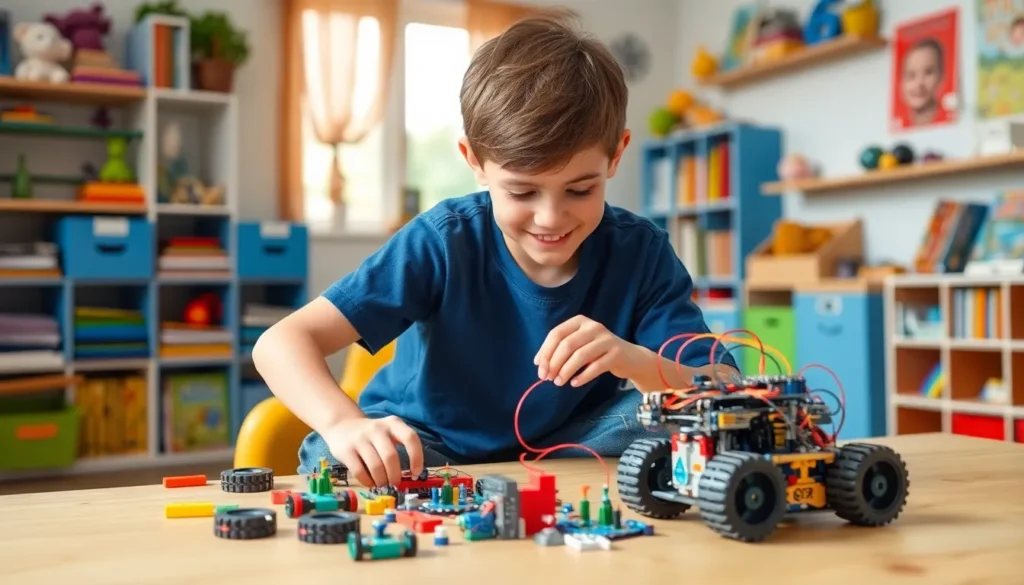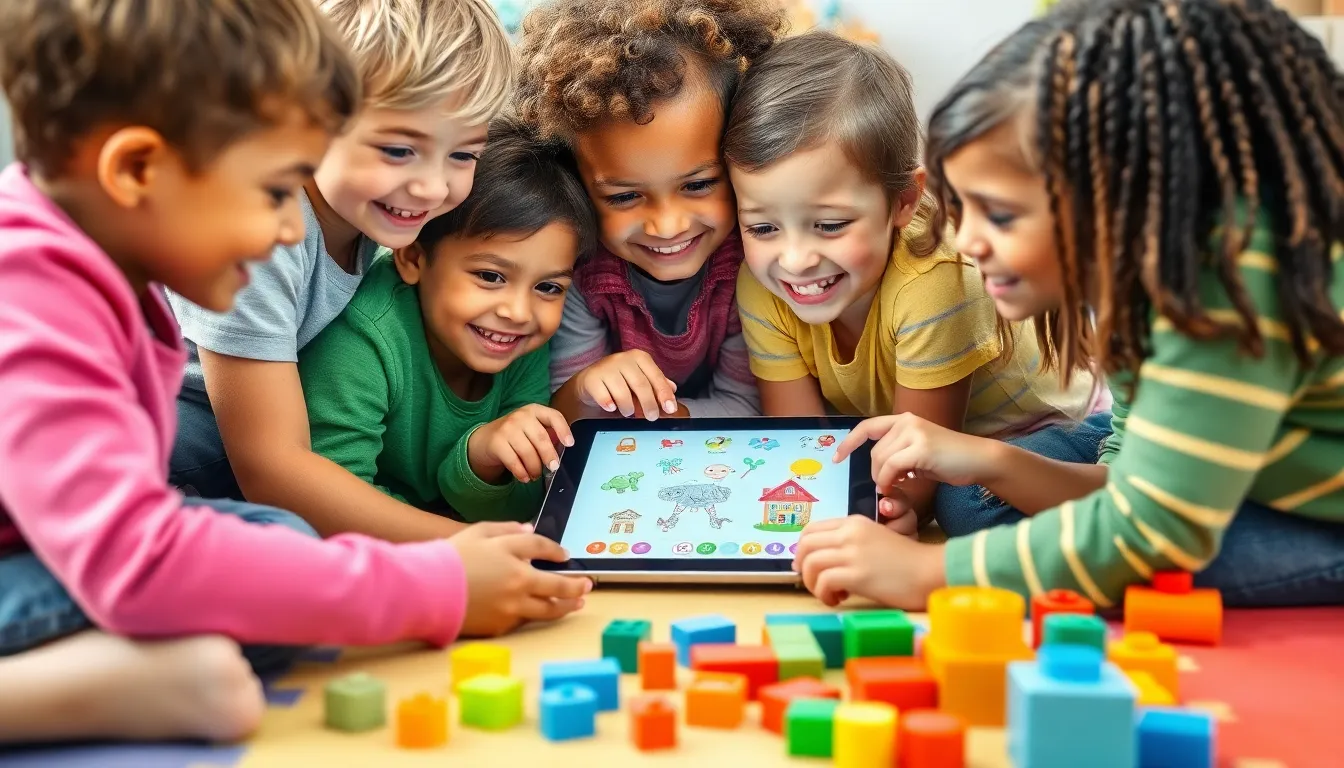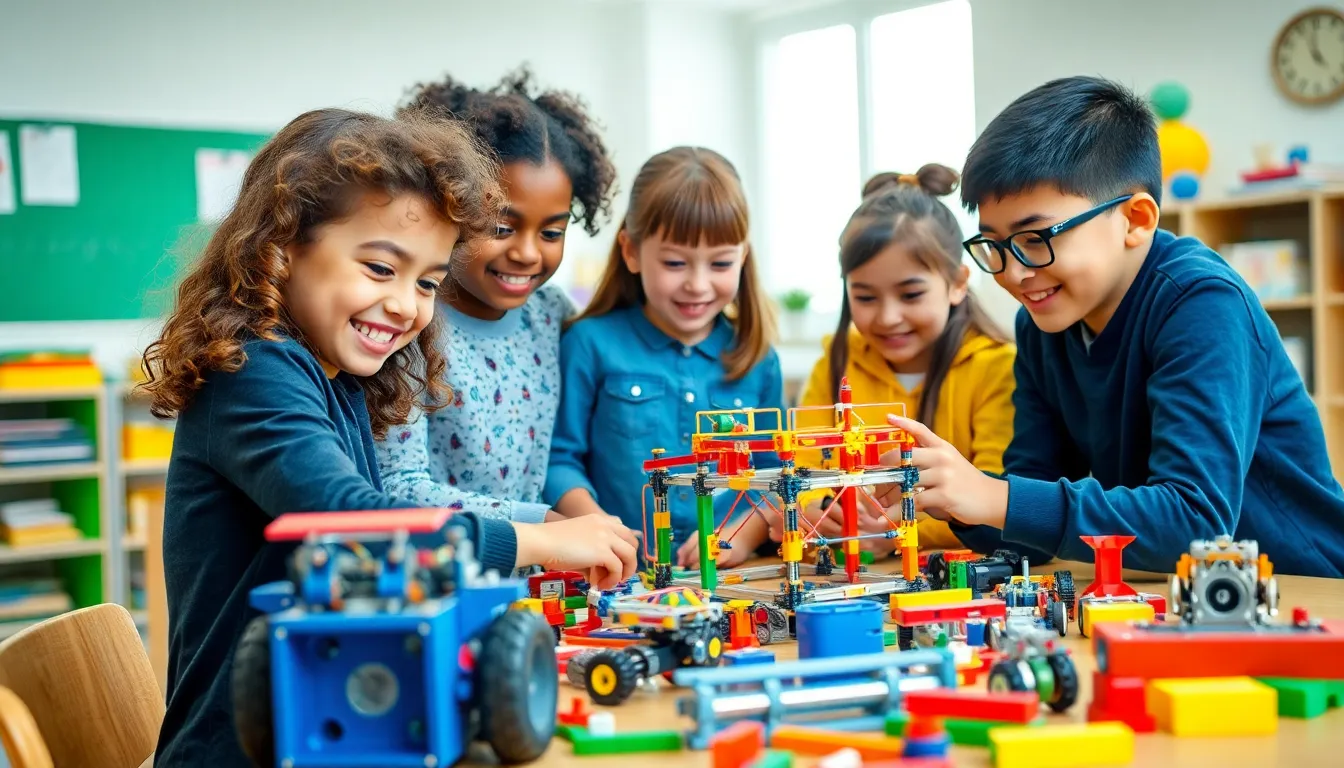In a world increasingly driven by technology, coding toys have emerged as a fun and engaging way to introduce kids to the fundamentals of programming. These innovative toys not only spark creativity but also foster critical thinking and problem-solving skills. As children navigate through challenges and puzzles, they gain confidence in their abilities while developing a foundational understanding of coding concepts.
Parents and educators alike are recognizing the value of coding toys in today’s educational landscape. With a wide variety of options available, from interactive robots to coding games, these toys cater to different age groups and learning styles. They make learning to code accessible and enjoyable, setting the stage for future success in an ever-evolving digital world.
Table of Contents
ToggleOverview of Coding Toys
Coding toys serve as interactive tools that introduce children to programming concepts through hands-on play. These toys often combine elements of robotics, app design, and game development to create engaging learning experiences.
Types of Coding Toys
- Robotic Kits
Robotic kits, like LEGO Mindstorms and Dash, allow children to build and program robots using simple coding languages.
- Board Games
Board games, such as Code Master and Robot Turtles, teach logic and sequencing skills through fun, competitive gameplay.
- Online Platforms
Online platforms like Scratch and Code.org offer kids a virtual space to learn coding through interactive tutorials and projects.
- Apps
Apps such as LightBot and Tynker enable children to practice coding concepts through puzzles and challenges on their tablets or smartphones.
Benefits of Coding Toys
- Enhances Problem-Solving Skills
Coding toys challenge children to think critically and devise effective strategies to complete tasks.
- Fosters Creativity
Many coding toys encourage kids to invent projects, from simple animations to complex games, promoting creative expression.
- Builds Confidence
Successfully completing projects boosts children’s self-esteem, motivating them to tackle more complex coding challenges.
- Promotes Collaboration
Many coding toys can be used in group settings, fostering teamwork and communication among peers.
Coding toys provide a diverse array of options that cater to various ages and learning styles, ensuring coding remains an accessible and enjoyable endeavor for children.
Benefits of Coding Toys

Coding toys offer numerous advantages that significantly benefit children’s growth and learning. They encourage the development of essential skills that are crucial for future success.
Cognitive Development
Coding toys enhance cognitive development by stimulating critical thinking, logical reasoning, and analytical skills. Engaging with these toys requires children to understand sequences, patterns, and cause-and-effect relationships. For example, using a robotic kit encourages them to plan and execute specific tasks, fostering mental agility. Children learn to break down complex problems into manageable parts, improving their ability to think systematically.
Problem-Solving Skills
Coding toys cultivate problem-solving skills by presenting kids with challenges that require creative solutions. As children navigate various scenarios, they learn to experiment and iterate on their ideas, which builds resilience. For instance, board games like Code Master prompt players to strategize and adapt to new obstacles. This iterative process helps children develop perseverance and a growth mindset, essential traits for tackling real-world problems.
Types of Coding Toys
Various types of coding toys cater to different interests and skill levels, providing children with engaging ways to learn programming concepts. The following sections outline some popular categories.
Robotics Kits
Robotics kits, such as LEGO Mindstorms and VEX Robotics, offer hands-on experiences where children build and program robots. These kits usually include sensors, motors, and various structural components. Kids learn coding by designing algorithms to control the robot’s movements or respond to environmental stimuli. Robotics kits foster creativity by allowing users to customize their creations while enhancing problem-solving and logical reasoning skills through trial and error.
Board Games
Board games like Code Master and Robot Turtles enable children to grasp programming fundamentals without screens. These games utilize sequencing, strategy, and logic to solve puzzles or guide characters through mazes. Players engage in collaborative play, developing teamwork and critical thinking as they work through challenges. Board games also promote fun learning environments, making coding accessible for young children.
Apps and Software
Apps and software, such as Scratch and LightBot, provide interactive coding experiences on digital platforms. These programs often feature visual programming interfaces that simplify code creation, allowing children to create animations, games, or stories by dragging and dropping code blocks. Through engaging challenges and tutorials, these platforms encourage experimentation and creativity. Apps also facilitate collaboration, enabling users to share projects and learn from each other, reinforcing coding concepts through social interaction.
Popular Coding Toys in 2023
In 2023, several coding toys stand out for their educational value and engaging designs. These toys cultivate essential coding skills through interactive play.
Product 1: Features and Benefits
LEGO Mindstorms EV3
LEGO Mindstorms EV3 combines robotics with building blocks, allowing children to construct custom robots. The intuitive programming interface supports drag-and-drop commands. Children learn logical reasoning and problem-solving as they program their creations to perform tasks. Collaborating on projects fosters teamwork. Additionally, the extensive community provides resources and inspiration.
Product 2: Features and Benefits
Osmo Coding Starter Kit
Osmo Coding Starter Kit introduces coding through an interactive tabletop experience. The kit includes physical blocks that represent code commands. Children move the blocks to make characters navigate obstacles in a game. This hands-on approach enhances critical thinking and spatial awareness. The playful design encourages exploration and creativity, making learning fun and effective.
How to Choose the Right Coding Toy
Choosing the right coding toy involves considering key factors that match a child’s age and learning objectives. These considerations ensure that the toy aligns with developmental needs and educational goals.
Age Appropriateness
Select coding toys based on the child’s age group. Toys designed for younger children, typically ages 4 to 7, focus on basic concepts and often use colorful and engaging visuals. Examples include simple robot kits with intuitive interfaces or board games that introduce fundamental programming logic. For ages 8 to 12, more complex kits that incorporate building and coding become suitable. LEGO Mindstorms and similar products allow for deeper exploration of robotics and programming. Teenagers may benefit from advanced platforms that support real coding languages, such as Scratch or Python, fostering technical skills critical for future endeavors.
Learning Goals
Identify specific learning goals before purchasing a coding toy. Define whether the focus is on fostering creativity, enhancing problem-solving abilities, or laying a foundation in programming languages. For creativity, opt for toys that emphasize imaginative play, such as app-based coding games that encourage innovation. To enhance problem-solving skills, select toys that present challenges or puzzles, like robotic kits that require strategic planning to program effectively. For foundational programming education, choose interactive platforms that introduce coding syntax and logic. Align the toy’s capabilities with the child’s learning aspirations to maximize educational benefits.
Coding toys are revolutionizing how children learn the fundamentals of programming. By combining play with education, these toys not only make coding accessible but also enjoyable. They foster essential skills such as creativity and problem-solving while building confidence in young learners.
As parents and educators embrace these innovative tools, the variety available ensures that every child can find a coding toy that resonates with their interests and learning styles. Investing in coding toys is a step towards equipping the next generation with the skills they need to thrive in a technology-driven world. With the right choice, children can embark on a fun and educational journey that lays the groundwork for future success in coding and beyond.






